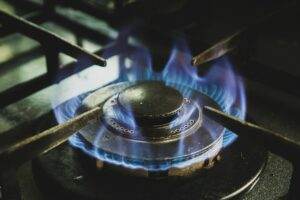Having a functional oven in the kitchen is essential for cooking and baking delicious meals. Whether you’re a professional chef or a home cook, a reliable oven is a must-have appliance. It allows you to roast, bake, broil, and even grill your favorite dishes. However, like any other appliance, ovens can experience problems and malfunctions over time. These issues can range from minor inconveniences to major disruptions in your cooking routine. In this article, we will explore common oven problems and their symptoms, as well as provide troubleshooting techniques and maintenance tips to keep your oven running smoothly.
Key Takeaways
- Common oven problems include uneven heating, strange noises, and failure to turn on.
- There are several types of ovens, including gas, electric, and convection.
- Basic troubleshooting techniques for oven issues include checking the power source and cleaning the oven.
- Regular oven maintenance, such as cleaning and replacing worn parts, can prevent future problems.
- Oven heating issues can be caused by faulty heating elements, sensors, or thermostats.
Common Oven Problems and Symptoms
Ovens can experience a variety of problems, each with its own set of symptoms. One common issue is when the oven fails to heat up properly or at all. This can be caused by a faulty heating element, a malfunctioning temperature sensor, or a problem with the power source. Another common problem is uneven cooking, where certain areas of the oven cook faster or slower than others. This can be due to a malfunctioning convection fan or improper placement of the food in the oven.
Strange noises coming from the oven can also indicate a problem. These noises can range from rattling or banging sounds to hissing or buzzing sounds. They may be caused by loose components, worn-out parts, or issues with the fan motor. Other common problems include inaccurate temperature readings on the control panel, malfunctioning timers, and issues with the oven door not closing properly.
Understanding the Different Types of Ovens
There are several types of ovens available on the market, each with its own unique features and benefits. Gas ovens are powered by natural gas or propane and provide instant heat. They are known for their precise temperature control and even cooking results. Electric ovens, on the other hand, use electricity to generate heat. They are generally more affordable than gas ovens and offer consistent heat distribution.
Convection ovens are a popular choice for many cooks. They have a fan that circulates hot air inside the oven, resulting in faster and more even cooking. Convection ovens are especially great for baking, as they help to achieve perfectly golden and crispy crusts. Some ovens also come with additional features such as self-cleaning functions, steam cooking capabilities, and built-in temperature probes.
Basic Troubleshooting Techniques for Oven Issues
When faced with an oven problem, there are a few basic troubleshooting techniques you can try before calling a professional. First, check the power source to ensure that the oven is receiving electricity or gas. Make sure the circuit breaker hasn’t tripped or the gas supply hasn’t been interrupted. If the oven is not heating up properly, it may be due to a faulty heating element. You can visually inspect the element for any signs of damage or wear and tear. If it appears damaged, it will need to be replaced.
Cleaning the oven regularly is also important for maintaining its performance. Built-up grease and food debris can affect the oven’s heating capabilities and cause uneven cooking. Use a non-abrasive cleaner and a soft cloth to clean the interior of the oven, including the racks and walls. For stubborn stains or burnt-on food, you can use a paste made of baking soda and water. Let it sit for a few hours before scrubbing it off.
The Importance of Regular Oven Maintenance
Regular oven maintenance is crucial for preventing issues and extending the lifespan of your appliance. By taking care of your oven, you can avoid costly repairs and ensure that it continues to perform at its best. One important maintenance task is cleaning the oven regularly, as mentioned earlier. This not only improves cooking performance but also prevents unpleasant odors and smoke from filling your kitchen.
Another important maintenance task is inspecting and cleaning the oven burners and igniters. Over time, these components can become clogged with grease and food debris, affecting their performance. Use a soft brush or a toothbrush to gently clean the burners and igniters. If you notice any damage or corrosion, they may need to be replaced.
It’s also important to check the oven door and seal for any issues. A faulty door seal can cause heat loss and affect the oven’s efficiency. Inspect the seal for any signs of wear or damage, such as cracks or tears. If necessary, replace the door gasket to ensure a tight seal.
Diagnosing Oven Heating Issues
If your oven is not heating up properly, it can be frustrating and hinder your cooking efforts. To diagnose heating issues, start by checking the heating element. This is a metal coil located at the bottom of the oven or on the back wall. Turn on the oven and observe if the heating element glows red. If it doesn’t, it may be faulty and need to be replaced.
Another component to check is the temperature sensor, also known as the oven thermostat. This sensor monitors the oven’s temperature and sends signals to the control board to maintain the desired temperature. Use a multimeter to test the resistance of the temperature sensor. If it shows an open circuit or a significantly different resistance reading than what is specified in the oven’s manual, it may need to be replaced.
Identifying Faulty Oven Thermostats
A faulty oven thermostat can cause temperature inaccuracies and uneven cooking results. To identify a faulty thermostat, you can perform a simple test using an oven thermometer. Preheat your oven to a specific temperature and place an oven thermometer inside. After about 15 minutes, check if the temperature on the thermometer matches the set temperature on the control panel. If there is a significant difference, it may indicate a faulty thermostat.
Replacing an oven thermostat can be a complex task and may require the help of a professional. However, if you have experience with appliance repairs and feel comfortable doing it yourself, you can consult the oven’s manual for instructions on how to replace the thermostat.
Inspecting Oven Burners and Igniters
Oven burners and igniters are responsible for generating heat in gas ovens. Over time, they can become clogged with grease and food debris, affecting their performance. To inspect and clean the burners and igniters, start by turning off the gas supply to the oven. Remove the burner covers and inspect them for any signs of damage or corrosion. Clean them using a soft brush or a toothbrush to remove any debris.
Next, locate the igniters, which are small devices that produce sparks to ignite the gas. Inspect them for any signs of wear or damage. If they appear damaged or corroded, they may need to be replaced. Use a soft brush or a toothbrush to clean the igniters and remove any debris.
Diagnosing Oven Timer and Control Panel Problems
Issues with the oven timer and control panel can be frustrating and affect your ability to use the oven properly. Common problems include inaccurate temperature readings, buttons not responding, or error codes appearing on the display. To diagnose these issues, start by checking if the oven is properly connected to a power source. Ensure that the circuit breaker hasn’t tripped and that there are no loose connections.
If the power supply is not the issue, you can try resetting the control panel by turning off the oven at the circuit breaker for a few minutes and then turning it back on. If this doesn’t resolve the problem, consult the oven’s manual for specific troubleshooting steps or contact a professional for assistance.
Addressing Oven Door and Seal Issues
A faulty oven door or seal can cause heat loss and affect cooking performance. To address common oven door and seal issues, start by inspecting the door gasket. This is a rubber or silicone strip that creates a tight seal when the oven door is closed. Look for any signs of wear, such as cracks or tears. If the gasket appears damaged, it will need to be replaced.
To replace the door gasket, start by removing the old gasket from the oven door. Clean the area where the gasket was attached using a mild detergent and warm water. Dry the area thoroughly before installing the new gasket. Follow the instructions in the oven’s manual for specific steps on how to install the new gasket.
When to Call a Professional for Oven Repairs
While some oven issues can be resolved with basic troubleshooting techniques, there are times when it’s best to call a professional for repairs. If you’re unsure about your ability to diagnose or fix an oven problem, it’s always safer to seek professional help. Additionally, if you notice any signs of gas leaks, such as a strong smell of gas or hissing sounds, it’s important to evacuate your home immediately and call a professional.
When choosing a professional repair service, look for one that is licensed and insured. Read reviews and ask for recommendations from friends or family members. A reliable repair service will provide a warranty on their work and use genuine replacement parts.
Having a functional oven in the kitchen is essential for cooking and baking delicious meals. However, ovens can experience problems and malfunctions over time. By understanding common oven problems and their symptoms, as well as learning basic troubleshooting techniques and maintenance tips, you can keep your oven running smoothly and avoid costly repairs. Remember to always prioritize safety when working with ovens and seek professional help if needed. With proper care and maintenance, your oven will continue to serve you well for years to come.
Can I Use the Step-by-Step Repair Guide to Diagnose Oven Problems?
Yes, you can definitely use the step by step oven repair guide to diagnose oven problems. This detailed guide provides clear and easy-to-follow instructions for troubleshooting common issues with your oven. Whether it’s a heating element or a malfunctioning control panel, the step by step oven repair guide will help you identify and fix the problem quickly.
How Can Clock Issues Affect the Functionality of My Oven?
When diagnosing clock issues with your oven, consider how they may impact its functionality. Errors in the clock settings can lead to inaccurate cooking times or even cause the oven to stop working altogether. It’s important to address these issues promptly to avoid any inconvenience in the kitchen.
FAQs
What are some common oven problems?
Some common oven problems include uneven heating, failure to heat up, temperature fluctuations, and malfunctioning controls. To address these issues, it’s important to regularly check the oven’s heating elements and calibrate the temperature settings. For those experiencing persistent issues, consulting overheating oven troubleshooting tips can provide valuable insights and solutions. Additionally, ensuring proper ventilation and avoiding overcrowding can help maintain consistent cooking temperatures. Addressing these issues may require a careful approach to ensure safety and functionality. In many cases, troubleshooting wolf oven problems involves checking the thermostat calibration and examining the heating elements for wear or damage. Additionally, consulting the user manual or seeking professional assistance can provide the necessary guidance for resolving these challenges effectively. Identifying the root cause of these issues can often prevent further damage and improve cooking results. Many homeowners can benefit from learning simple oven troubleshooting techniques, such as checking heating elements, cleaning sensor components, or recalibrating the temperature settings. By addressing these problems promptly, one can extend the life of the oven and restore its performance.
How can I diagnose an oven problem?
To diagnose an oven problem, you can check for signs of wear and tear, listen for unusual noises, and test the oven’s heating elements and controls.
What should I do if my oven isn’t heating up?
If your oven isn’t heating up, you should check the heating elements, thermostat, and control board for any signs of damage or malfunction. You may need to replace these parts to get your oven working again.
Why is my oven heating unevenly?
Uneven heating in an oven can be caused by a variety of factors, including a faulty heating element, a malfunctioning thermostat, or a damaged oven seal. You may need to replace these parts to fix the problem.
How can I prevent oven problems?
To prevent oven problems, you should clean your oven regularly, avoid using harsh chemicals or abrasive materials on the oven’s interior, and have your oven serviced by a professional on a regular basis.



